Shankar IAS Summary: Conservation Efforts | Famous Books for UPSC Exam (Summary & Tests) PDF Download
Project Tiger
Project Tiger is an initiative in India focused on saving the endangered Indian Tiger. Back in 1900, there were around 40,000 tigers in India, but by 1972, the number had dropped to a very low 1800. To address this alarming decline,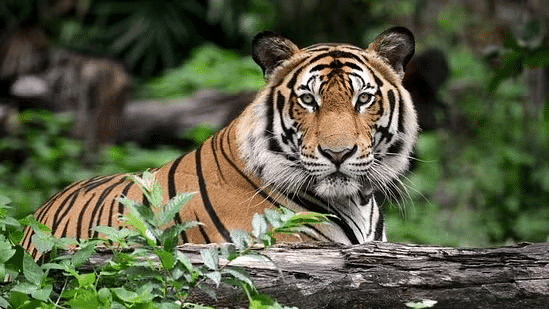
Protecting Tiger Population: The project aims to make sure there are enough tigers in India for various reasons such as science, economy, beauty, culture, and ecology.
Preserving Important Areas: It also seeks to safeguard important natural areas, considering them as national treasures. These areas are meant to be preserved forever for the benefit, education, and enjoyment of the people.
The overall aim of Project Tiger is twofold:
Conservation of Tigers: To protect and increase the number of tigers, ensuring their survival.
Balancing with Tribal Rights: While conserving tigers is crucial, the project also emphasizes the importance of balancing the rights of tribal people who live in and around tiger reserves. It seeks to find a harmony where both the endangered species and the tribal communities can coexist.
Tiger Reserve
Tiger reserves are areas that are notified for the protection of the tiger and its -prey, and are governed by Project Tiger which was launched in the country in 1973-2025 the number has grown up to 58.
A total area of 82,836.44 km² is now covered by these Project Tiger areas
A Tiger Reserve is like a special zone set aside to protect tigers and their prey, managed by Project Tiger launched in 1973. In the beginning, there were 9 tiger reserves, but now there are 58 in 17 different states.
Here's a simple breakdown:
How it's Declared: The state government can declare an area as a tiger reserve based on a recommendation from the National Tiger Conservation Authority.
What's Inside a Tiger Reserve:
- Core Zone: This is like the tiger's main living space. It's chosen using scientific criteria and is crucial for tiger conservation. However, the rights of local tribes and forest dwellers are respected.
- Buffer Zone:
- This is like the area surrounding the core zone. It provides some protection but allows for a bit more human activity. The idea is to balance the needs of wildlife with the rights of local people.
- Setting Boundaries: The limits of these zones are decided based on science, in consultation with local communities and experts. No changes can be made to these boundaries without approval from the National Tiger Conservation Authority and the National Board for Wild Life.
- Protection Measures: Once an area becomes a tiger reserve, it can't be removed unless there's a really good reason and both national authorities give the green light.
National Tiger Conservation Authority (NTCA)
The National Tiger Conservation Authority (NTCA) is a statutory body established in December 2005 under the Ministry of Environment, Forest and Climate Change, constituted under the Wildlife (Protection) Act, 1972 (amended in 2006), to strengthen tiger conservation efforts in India.
- Approving Plans: The NTCA evaluates and approves Tiger Conservation Plans prepared by state governments, ensuring they align with national conservation objectives and legal frameworks
- Protecting the Land: They make sure that the land where tigers live is not used in ways that can harm them, like mining or big industries.
- Guiding Tourism: They set rules for tourists visiting areas where tigers live, making sure it doesn't bother the tigers too much.
- Sharing Information: They share important information about how many tigers there are, the places they live, and if there are any problems like diseases or accidents.
- Preserving Tiger Areas: They make sure that the special areas where tigers live are not changed for things that can harm the environment, unless it's really necessary for the public and has approval from a higher wildlife board.
- Helping Conservation: They support efforts to protect tigers, including working with local communities and following plans approved by the government.
- Supporting Tiger Reserves: They give help like scientific advice, using technology, and legal support to make sure the plans to save tigers are working well.
- Training and Development: They make sure the people who take care of tigers are trained well and keep getting better at their jobs.
Estimation of Tiger Populations
Counting how many tigers are in a certain area is called a "Tiger census." This is like taking a big picture of the tiger population.
India conducts the All India Tiger Estimation (AITE) every four years, with the latest in 2022 estimating the tiger population at 3,682 individuals, marking a significant increase from 2,967 in 2018.
Why it's Done: This checkup is a vital part of making sure we're doing a good job in protecting our tigers. It gives us an idea of how many tigers we have and how well they are doing in their homes.
Three Steps of Checking
- Phase 1: People trained to look after tigers gather info about them in the field. They follow a set way of doing things to make sure it's fair.
- Phase 2: They use satellite data to look at the homes of the tigers and see how things are going there.
- Phase 3: They take pictures of tigers using cameras. This is a smart way to tell different tigers apart because of their unique stripe patterns.
Phase IV
- Why it's Done: The census helps us know how many tigers are there, how much space they need, and if their numbers are going up or down. It's like a health check for the tiger community.
- How it's Done: People do this regularly to keep an eye on the tiger population and how it's changing. They not only count the tigers but also figure out how many tigers can live in a certain area and what they eat.
- Old and New Ways: In the past, they used a method called 'Pugmark Census Technique,' where they looked at footprints to identify tigers. Now, they use more modern ways like taking pictures with cameras and even using DNA fingerprinting.
- Camera Trapping: This means taking pictures of tigers using cameras. They can tell different tigers apart by looking at the patterns on their bodies, especially their stripes.
- DNA Fingerprinting: In this cool new technique, they can identify tigers by studying their droppings, called scats. It's like a tiger's unique signature found in their poop.
Innovations In the 2010 National Tiger assessment
The 2010 National Tiger Assessment brought in several improvements compared to previous assessments:
- Teamwork: They formed partnerships with civil society organizations for better collaboration.
- Local Involvement: Local communities actively participated in collecting and analyzing data.
- Genetic Analysis: They used genetic analysis on fecal samples to estimate tiger populations.
- Comprehensive Assessment: They didn't just focus on tigers; they also assessed co-predators, prey, and the quality of their habitat.
- Innovative Techniques: They tried new methods like using satellite telemetry and sign surveys to estimate tiger populations in the Sunderbans Tiger Reserve.
- Exploration: For the first time, they estimated the tiger population in the Sahyadri Tiger Reserve in Maharashtra.
These innovations made the 2010 assessment more comprehensive, involving local communities, using advanced genetic techniques, and exploring new ways to understand and protect tigers.
Tiger Population Estimates
Scientists used the same good methods in both 2006 and 2010 to count tigers. This made it easy to compare the results and see how the tiger numbers were changing.
In 2006, they estimated there were 1411 tigers. Thanks to efforts to protect tigers, the number went up to 1706 in 2010 and then to 2226 in 2014.
All India Tiger Estimation - 2018
Guinness World Record: India's 2018 tiger survey set a Guinness World Record as the largest camera trap wildlife survey.
Tiger Population in India: India has nearly 70% of the world's tiger population.
Tiger Count in 2018: According to the 2018 All India Tiger Estimation, there were 2,967 tigers in India.
State-wise Tiger Count:
- Madhya Pradesh had the highest number of tigers at 526.
- Karnataka closely followed with 524 tigers.
- Uttarakhand ranked third with 442 tigers.
State Changes:
- Chhattisgarh and Mizoram saw a decline in tiger numbers.
- Odisha's tiger population remained constant.
- Other states witnessed a positive trend in tiger numbers.
Landscape Level Increase: All five landscapes in India showed an overall increase in tiger numbers, with the Central Indian landscape recording the highest increment.
St. Petersburg Declaration: India achieved its commitment to the St. Petersburg Declaration, doubling the tiger population well before the 2022 deadline.
International Cooperation
- India has a deal with Nepal to stop illegal wildlife trade and work together on conservation.
- India also has a special plan with China to protect tigers.
- India is in the process of making agreements with Bangladesh, Bhutan, and Myanmar to team up on conservation.
- There's a group called the Global Tiger Forum, where countries with tigers come together to talk about international issues related to saving these big cats.
Asian Ministerial Conference on Tiger Conservation
Big Tiger Meeting: There was a meeting about saving tigers called the Asian Ministerial Conference on Tiger Conservation.
New Delhi Resolution: At this meeting, they decided on something important called the New Delhi Resolution. It has a few key points:
- They want to help tigers in areas where there aren't many by doing three things: fixing the environment, bringing tigers back, and helping them get better.
- They're speeding up a plan called the Global Tiger Recovery Programme, which involves making tiger homes better and using fancy tech to stop poaching.
- People living in these areas and others should join in to help tigers, and they want to make sure tiger homes are useful for the environment, economy, and tackling climate change.
- They're also teaming up to fight against crimes involving wildlife.
Past Meetings: This is the third time they've had a big tiger meeting. The earlier ones were in Thailand in 2010 and Bhutan in 2012. There was also a special Tiger Summit in St. Petersburg in 2010.
Countries Involved: The countries working together to save tigers are Bangladesh, Bhutan, Cambodia, China, Indonesia, India, Laos, Malaysia, Myanmar, Nepal, Russia, Thailand, and Vietnam.
Project Lion

Gir Forest Lions: The number of Asiatic lions in Gujarat's Gir forest increased from 523 in 2015 to 674 in 2020.
Lion Relocation Talks: Since 1995, there have been discussions about moving lions. Kuno Wildlife Sanctuary was identified as an alternate site because the Gir population has low genetic diversity, making them vulnerable to diseases. The Supreme Court in 2013 ordered the state to relocate lions to Kuno-Palpur Wildlife Sanctuary.
Genetic Diversity Concerns: The CSIR-Centre for Cellular and Molecular Biology found that Asiatic lions lack genetic diversity compared to other lion populations.
New Sites for Lion Relocation: Apart from Kuno-Palpur Wildlife Sanctuary, six new sites have been identified for possible lion relocation under Project Lion.

- Madhav National Park, Madhya Pradesh
- Sitamata Wildlife Sanctuary, Rajasthan
- Mukundra Hills Tiger Reserve, Rajasthan
- Gandhi Sagar Wildlife Sanctuary, Madhya Pradesh
- Kumbhalgarh Wildlife Sanctuary, Rajasthan
- Jessore-Balaram Ambaji WLS and adjoining landscape, Gujarat
Asiatic Lion Conservation Project: The Central Government launched the "Asiatic Lion Conservation Project" for three years (2018-21) to protect and conserve the Asiatic Lion and its ecosystem.
Funding and Conservation: The project is funded through the Centrally Sponsored Scheme-Development of Wildlife Habitat (CSS-DWH), with a 60:40 ratio of Central and State contributions. The Asiatic Lion is critically endangered, and the project follows a "Species Conservation over a large landscape" approach, with specific plans for the Greater Gir Region.
Project Elephant
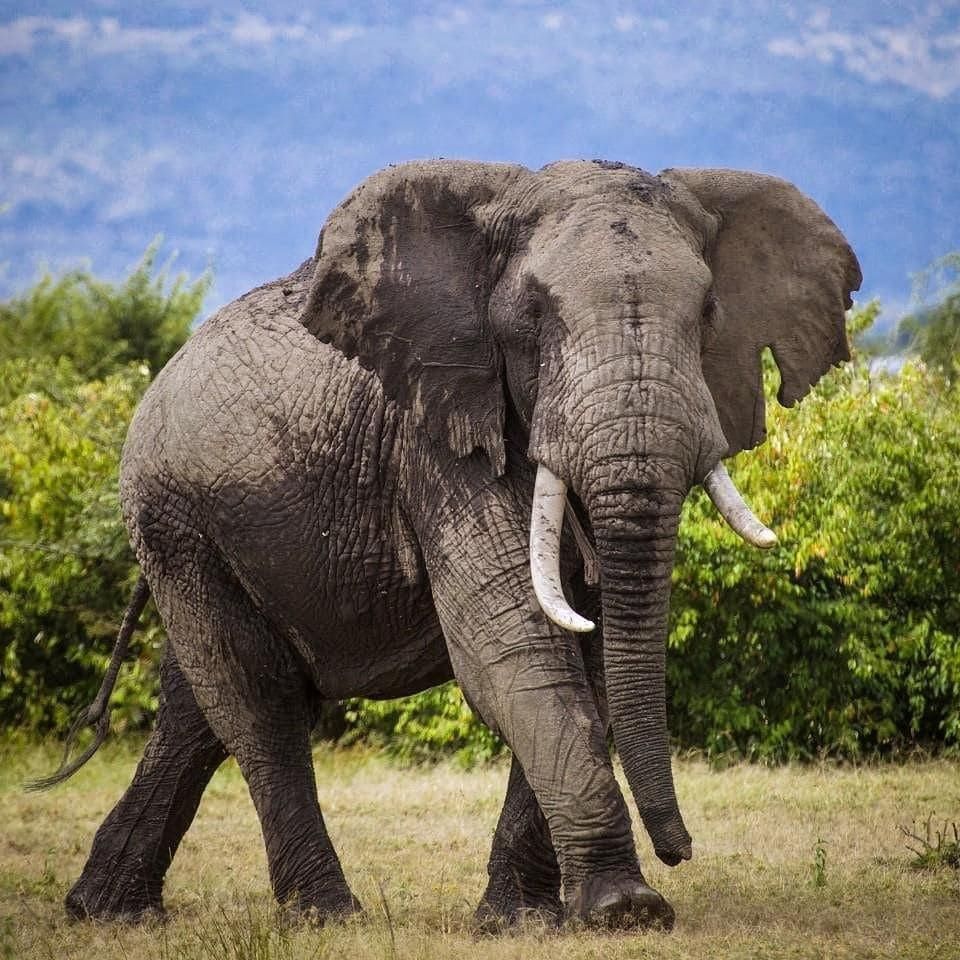
Project Elephant Start: In February 1992, the Indian government launched a special initiative called Project Elephant. The main aim of this project is to support states that have wild elephants, ensuring their survival in the long run.
Where It's Happening: This project is primarily active in 13 states and union territories such as Andhra Pradesh, Assam, Karnataka, Kerala, and others. Additionally, there's some support extended to Maharashtra and Chhattisgarh.
Why It's Needed: The main goal is to provide assistance to states with wild elephants. This involves financial support and technical expertise to conduct tasks like counting elephants, training staff, and managing conflicts between humans and elephants.
Objectives:
- Protect Elephants: Ensuring the safety of elephants, safeguarding their habitats, and creating secure pathways for their movement.
- Address Conflicts: Resolving issues that arise when there are conflicts between people and elephants.
- Welfare of Domesticated Elephants: Taking care of elephants that live alongside human communities.
Aim: The broader goal is to restore natural habitats and migratory routes for elephants. This includes reducing conflicts between people and elephants while managing human activities in areas where elephants live.
Specific Goals:
- Conservation Measures: Implementing plans to protect elephants and their habitats.
- Stop Illegal Activities: Preventing illegal activities like hunting and the trade of ivory.
- Research and Awareness: Studying issues related to elephants and creating awareness and education programs for the public.
- Eco-Development and Vet Care: Supporting elephants through environmental initiatives and providing veterinary care.
- Maintain Tamed Elephants: Taking care of and breeding elephants that live with people.
Elephant Corridor
An elephant corridor is like a pathway, usually a narrow strip of land with trees, that connects different areas where elephants live. It helps elephants move around, which is crucial for their survival and having baby elephants.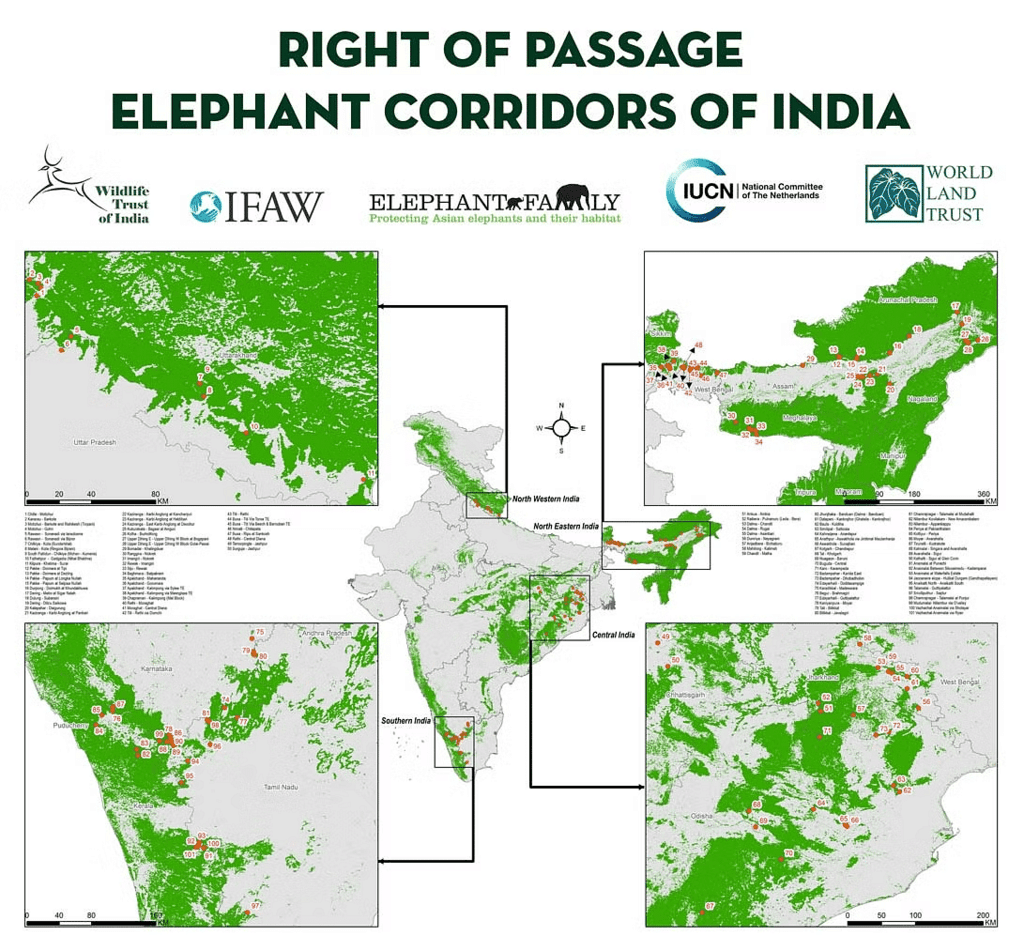
India has identified 88 elephant corridors across the country. They are located in:
- 20 corridors are in South India
- 12 in north-western India
- 20 in central India
- 14 in northern West Bengal
- 22 in north-eastern India
How They're Used: Elephants regularly use about 77.3% of these corridors. Some are more important for the environment, about one-third being of high importance, and the other two-thirds are of medium importance.
Fragmentation Issues: The places where elephants live are sometimes cut into pieces, especially in northern West Bengal, followed by northwestern India, north-eastern India, and central India. South India has the least fragmentation.
Protection in South India: In South India, 65% of the corridors are in protected areas or reserved forests, meaning they are safer for elephants.
Land Use in Central India: In central India, 90% of the corridors are shared by forests, farms, and homes. Only 10% are entirely covered by forests.
National Picture: Across India, only 24% of the corridors are entirely covered by forests. The rest may have other types of land use.
Threats to Elephant Corridors
Main Problem: The biggest issue for elephants is losing their homes, which happens when places get broken up or destroyed by things like buildings, roads, railways, resorts, and solar-powered fences.
Big Threats in Central India: In the central part of India, coal mining and iron ore mining are the most significant dangers for the paths elephants use to move around. These are called elephant corridors.
Conflict Zones: States like Orissa, Jharkhand, and Chhattisgarh are rich in minerals, but they also have a lot of elephant corridors. This creates conflicts between elephants and people, especially because the development for mining can harm the paths elephants use.
Poaching Issue: People also hunt elephants for their tusks, which are very valuable. This is a big problem.
Not Enough Space: Elephants need a lot of space to find food, and many protected areas are not big enough for them. When elephants can't find enough food, they might go into areas where people live, causing conflicts. This can lead to damage to crops or even harm to people.
Mitigation Strategies
- Connecting Corridors: Combine elephant corridors with nearby protected areas whenever possible. In other cases, these areas might be officially labeled as Ecologically Sensitive Areas or conservation reserves for added protection.
- Monitoring and Habitat Restoration: When securing a corridor, keep an eye on animal movements and, if needed, work on restoring the natural habitat.
Engaging Local Communities: To secure corridors, local communities need to be made aware of the option to voluntarily move out of conflict zones to safer areas. This not only helps in conservation but also prevents further damage to the continuous forest habitat from urban expansion. It's especially vital for the safety of animals like tigers, elephants, sambar, marsh crocodiles, gharials, and various bird species.
Monitoring Illegal Killing of Elephants (MIKE) Programme

- Purpose:Started in South Asia in 2003 due to a resolution by COP (Convention on International Trade in Endangered Species of Wild Fauna and Flora), the MIKE program has two main purposes.
- Provide information for elephant-range countries to make good decisions on managing and enforcing rules for their elephant populations.
- Build the long-term capacity within these countries to manage their elephants properly.
- Objectives:
- Measure how much illegal hunting of elephants is happening and its trends over time.
- Understand the reasons behind these changes and assess if decisions by the CITES (Convention on International Trade in Endangered Species of Wild Fauna and Flora) are influencing these trends.
- Implementation: Data is collected monthly from all sites using specific MIKE patrol forms. This information is then sent to the Sub Regional Support Office for South Asia Program in Delhi, which assists the Ministry in carrying out the program effectively.
Haathi Mere Saathi Campaign
- It was launched by The Ministry of Environment and Forest (MoEF) partnered with the Wildlife Trust of India (WTT).

- Objective: The main goal is to improve the conservation and well-being of elephants, which are considered India's National Heritage Animal.
Launch Details:
- The campaign was officially launched at the "Elephant-8" Ministerial meeting in Delhi on May 24, 2011.
- E-8 Countries: The campaign involves eight countries, collectively known as E-8, which includes India, Botswana, Republic of Congo, Indonesia, Kenya, Sri Lanka, Tanzania, and Thailand.
Campaign Mascot
The campaign has a mascot named 'Gaju'. This friendly character represents the campaign's aim to create awareness and establish a connection between people and elephants.
Target Audience: The campaign targets various groups, including locals living near elephant habitats, the youth, policymakers, and other stakeholders.
Campaign Initiatives:
- The initiative envisions the creation of Gajah (the elephant) centres across the country. These centers are designed to spread awareness about elephants and involve people in addressing threats faced by them.
- The campaign also aims to enhance the capabilities of protection and law enforcement agencies. It advocates for policies that favor elephant conservation.
Purpose According to Elephant Task Force:
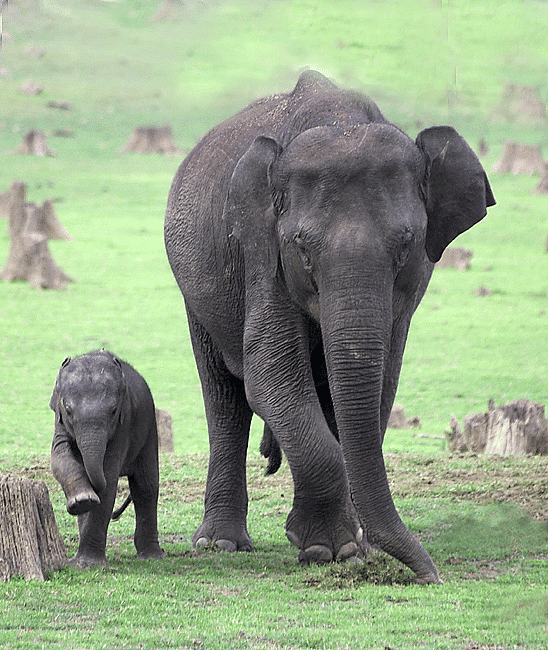
- The Elephant Task Force (ETF), which provided recommendations, emphasizes the campaign's mission to "Take Gajah (the elephant) to the prajah (the people)."
- This signifies spreading awareness and encouraging public participation in elephant conservation and well-being.
Elephant Challenges:
- While tigers face the threat of extinction, elephants face the risk of attrition due to increasing pressure on their habitats.
- Asian Elephant Threats: The Asian elephant is threatened by habitat degradation, conflicts with humans, and poaching for ivory. India, with over 50% of the world's Asian elephant population, faces intensified threats.
Elephant Numbers: India has about 25,000 elephants in the wild. Despite this seemingly large number, the campaign highlights the vulnerability of male elephants (tuskers), with only about 1,200 tuskers remaining in the country. This emphasizes the urgency of conservation efforts for these majestic creatures.
Elephant-8 (E-8) Ministerial Meeting
The E-8 ministerial meeting brought together countries from regions that are home to all three species of elephants: Asian elephants, African Bush Elephants, and African Forest Elephants.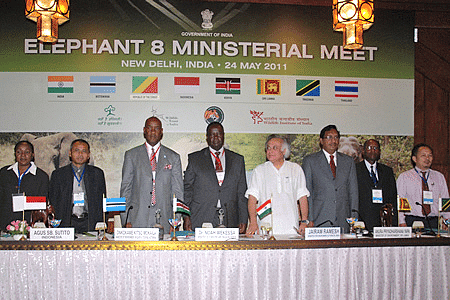
- Participants in the meeting included key decision-makers, conservationists, scientists, as well as experts in history, art, and culture from the involved countries.
Themes of Discussion: The discussions during the meeting revolved around three primary themes:
- Science and Conservation: Focused on understanding the scientific aspects of elephant conservation.
- Management and Conservation: Explored strategies for effectively managing and conserving elephant populations.
- Cultural and Ethical Perspectives of Conservation: Addressed the cultural and ethical dimensions related to elephant conservation.
Decisions and Resolutions:
- The meeting concluded with decisions to take necessary actions for the conservation of elephants.
- It was also decided to collectively pursue a common agenda aimed at ensuring the long-term well-being and survival of all elephant species in their respective range countries.
Elephant-50:50 Forum
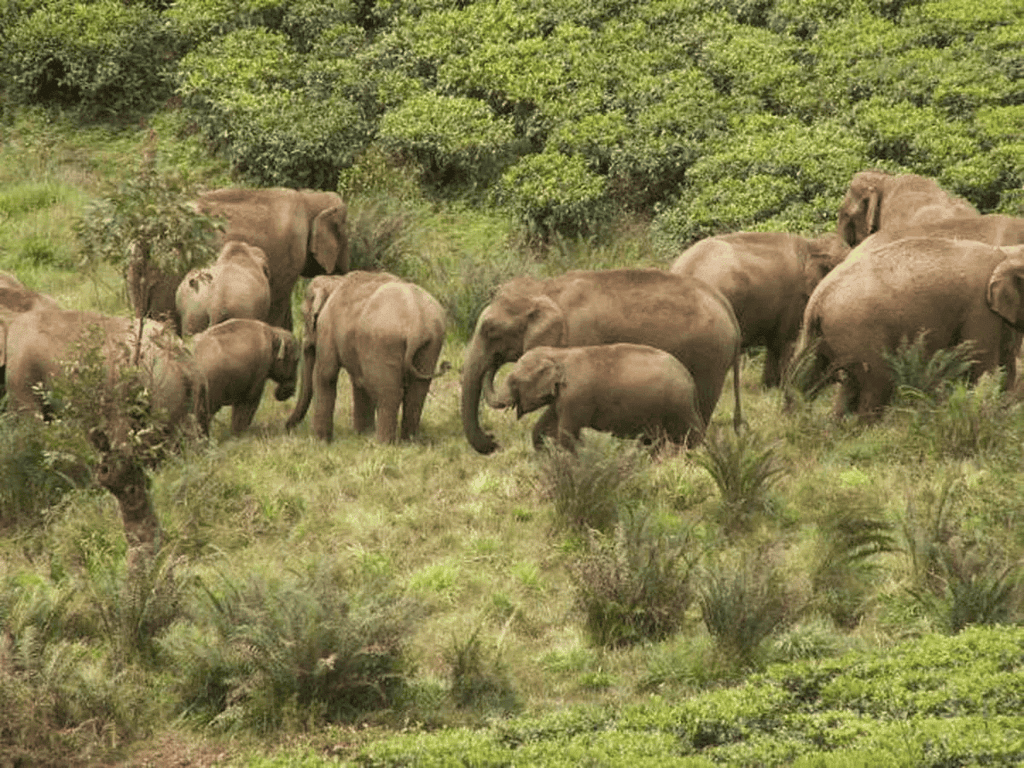
- The E-8 countries proposed the formation of the Elephant-50:50 Forum.
- This forum represents a collaborative effort of 50 states, working together with the shared vision of promoting the conservation, management, and welfare of elephants over the next 50 years.
International Congress of E-50:50 Forum:
- As part of their commitment, the E-8 countries planned to hold the 1st International Congress of E-50:50 Forum in early 2013 in New Delhi, India.
- The primary goal of this congress was to bring countries together to adopt a unified global vision concerning the conservation, management, and welfare of elephants across all regions.
Project Vulture

Indian Vulture Species:
- Oriental White-backed Vulture (Gyps bengalensis)
- Slender-billed Vulture (Gyps tenuirostris)
- Long-billed Vulture (Gyps indicus)
- Egyptian Vulture (Neophron percnopterus)
- Red-headed Vulture (Sarcogyps calvus)
- Indian Griffon Vulture (Gyps fulvus)
- Himalayan Griffon (Gyps himalayensis)
- Cinereous Vulture (Aegypius monachus)
- Bearded Vulture or Lammergeier (Gypaetus barbatus)
Decline of Vulture Populations:
- The decrease in vulture numbers in India was first noticed at Keoladeo Ghana National Park, Rajasthan.
- The Gyps genus, which includes several vulture species, saw a significant decline of about 97% over a 12-year period by 2005.
- Similar declines were observed in other Asian countries like Nepal and Pakistan.
Critical Endangerment:
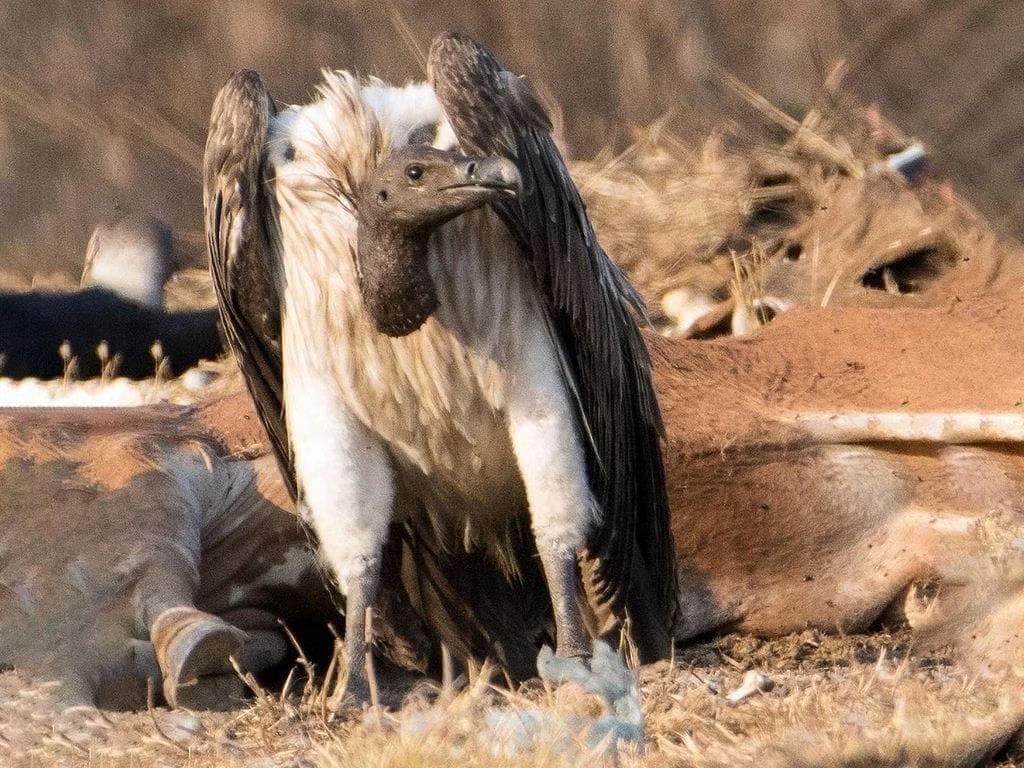
- Three species, namely White-backed Vulture, Slender-billed Vulture, and Long-billed Vulture, have seen a drastic decline in their populations over the past decade.
- Red-headed Vulture, Slender-billed Vulture, and Long-billed Vulture are classified as critically endangered.
- Populations of Egyptian vultures and White-backed Vultures have also decreased in India, leading to their classification as Endangered.
Cause of Decline:
- Initially, the decline was thought to be due to the lack of food (dead livestock) or an unknown viral epidemic.
- Later, it was confirmed that the population decline was primarily caused by the use of the drug diclofenac.
Diclofenac Sodium as the Probable Cause
Diclofenac is a type of medicine that helps reduce inflammation and pain in certain situations. However, it can have negative effects on the kidneys, leading to kidney failure. This is because it reduces the production of certain substances in the kidneys.
Vultures, birds that eat the remains of animals treated with diclofenac, face kidney failure and a condition called visceral gout, where uric acid builds up in their tissues and organs. Unfortunately, this often leads to their death.
A noticeable sign of illness in these birds is "neck drooping," where their necks hang down for a long time before they either fall from trees or die. This behavior is a clear indication that the vultures are unwell, and it's also reported in healthy birds when it's very hot outside.
Meloxicam - An Alternative

Meloxicam is another type of medicine, like diclofenac, but it's considered better for treating animals. It has fewer side effects and is approved for use in humans in more than 70 countries. In India, Europe, and the USA, it's allowed for use in animals.
Banned but still in use
In May 2006, the Indian Government banned diclofenac for treating animals, but some people still used the human version for sick cattle. The problem is that the human form is much cheaper than safer alternatives like meloxicam, which have been tested to make sure they don't harm vultures.
Significance of Vultures in India
Vultures play a crucial role in India for two reasons:
- They clean the environment by eating the remains of dead animals.
- They follow the religious practices of the Parsi community by helping dispose of dead bodies.
Vultures are the main animals that clean up dead animals in India and Africa.
Without Vultures
- Other animals that clean up carcasses will be affected.
- There will be more rotting carcasses, causing environmental issues.
- Feral dogs might spread diseases like rabies and anthrax by moving into areas with dead animals.
- The Parsi tradition of using "Towers of Silence" for vultures to feed on dead bodies will be impacted.
Vulture Safety Zones
The idea of a Vulture Safety Zone (VSZ) is special for Asia, but similar zones are in Europe and Africa. Creating VSZs aims to make people aware within a 150 km area around vulture homes. The goal is to ensure no diclofenac or harmful veterinary drugs are in the food of vultures, which is usually the carcasses of cattle. VSZs are set up in places like Jim Corbett in Uttarakhand, Dudhwa, and Kartarniaghat in UP, near the Indo-Nepal border. Nepal also has VSZs along the Indian borders.
VSZs provide:
- Safe food source: Food without harmful drugs and poisons.
- Extra food near vulture homes, helping young vultures survive and breed successfully.
- Additional food, like bone fragments, for breeding birds.
- Help prevent diseases from spreading.
- A place for scientists to study the biology and ecology of threatened vultures.
- A chance for public awareness about vulture protection and fundraising.
- A great opportunity for nature lovers to watch these amazing birds.
Zones
- The area from Uttarakhand to Nepal, including Corbett to Katriya Ghat, 2 Tarai belt, covering 30,000 square kilometers, is named a Vulture Safe Zone. It's home to slender-billed and white-backed vultures in marshy grasslands, savannas, and forests.
- A belt from Dibrugarh in Assam to North Lakhimpur in Arunachal Pradesh is kept as a vulture safe zone, hosting slender-billed and white-backed vultures.
- The third zone in central India, covering Chhattisgarh, is where white-backed and long-billed vultures are found.
What needs to be done?
Establish Diclofenac-Free Zones (DFZ) in identified vulture-safe zones, removing diclofenac completely where vultures live.Breeding Centres in India
Zoos in India have established Vulture Breeding and Conservation Centres in Pinjore, Haryana (2001), Rani, Guwahati, Assam, and Buxa, West Bengal (2005). The Central Zoo Authority of India pledged support for four more in Junagadh, Bhopal, Hyderabad, and Bhubaneswar in 2006-07. The Ministry of Environment and Forests (MoEF) identified safe zones in three places by 2014. Though breeding started some years ago, it takes around four to five years for young vultures to fly.
Measures taken to Conserve Vultures
- The veterinary drug Diclofenac is banned by the Indian and Nepalese governments.
- Meloxicam, a safe alternative, is promoted for vultures and scavenging birds.
- The Government of India formulated a National Action Plan (2006) for Vulture Conservation, addressing decline through ex-situ and in-situ vulture conservation.
- White-backed, Long Billed, and Slender Billed Vultures now have upgraded protection status from Schedule IV to Schedule I of the Wild Life (Protection) Act, 1972.
- Vulture Safety Zones and Vulture Restaurant sites are designated.
- A 'Vulture Captive Care facility' is set up in Panchkula.
- State Governments are advised to establish vulture care centers for the conservation of three vulture species.
- Captive breeding centers secure healthy birds for conservation and future release.
- The BNHS releases 30 young vultures from breeding centers, organizing awareness activities for various groups.
India's Role in Conservation
India proposed a motion in IUCN in 2004 for vulture conservation, leading to an accepted IUCN resolution urging Gyps vulture Range countries to prevent diclofenac use and establish the IUCN South Asian Task Force for national vulture recovery plans.
Save - Saving Asia’s Vultures From Extinction
- A consortium named Save coordinates conservation efforts for South Asia’s vultures.
- Focused on saving three species: Oriental white-backed vulture, Long-billed vulture, and Slender-billed vulture.
Partners
- Partners include Bird Conservation Nepal, Bombay Natural History Society (India), International Centre for Birds of Prey (UK), National Trust for Nature Conservation (Nepal), and Royal Society for the Protection of Birds (UK).

- Asia's first 'Gyps Vulture Reintroduction Programme' launched in Pinjore, releasing Himalayan Griffons into the wild from the Jatayu Conservation Breeding Centre. The Himalayan Griffon is related to endangered Gyps vulture species.

Project One Horn Rhino
 The One-horned Rhinoceros is a species in critical danger, identified for recovery by the Ministry of Environment, Forests & Climate Change (MOEFF & CC). About 75% of these rhinos are in India, primarily in Assam, Uttar Pradesh, and West Bengal. The MOEFF & CC initiated the "National Conservation Strategy for the Indian One-Horned Rhinoceros" to increase their population in areas where they were previously present.
The One-horned Rhinoceros is a species in critical danger, identified for recovery by the Ministry of Environment, Forests & Climate Change (MOEFF & CC). About 75% of these rhinos are in India, primarily in Assam, Uttar Pradesh, and West Bengal. The MOEFF & CC initiated the "National Conservation Strategy for the Indian One-Horned Rhinoceros" to increase their population in areas where they were previously present.Indian Rhino Vision 2020

Implementation: The Indian Rhino Vision 2020 is led by the Department of Environment and Forests, Assam, with active support from the Bodo Autonomous Council. Partners include WWF-India, WWF's Asian Rhino and Elephant Action Strategy, the International Rhino Foundation (IRF), and local NGOs. The program aims to raise the rhino population in Assam from 2000 to 3000 by 2020 and distribute them across at least seven protected areas.
Why?
Reasons: Concentrating rhinos in one area, like Kaziranga, exposes them to risks such as epidemics, floods, and poaching. Pobitora has too many rhinos, exceeding its carrying capacity, leading to habitat strain and increased rhino-human conflicts.
Species: One-horned Rhinoceros (Rhinoceros unicornis)
Activities: Anti-poaching, translocations, community conservation.
Translocations
Translocations are crucial for the Indian Rhino Vision 2020 program. The goal is to move rhinos from Kaziranga National Park and Pobitora Wildlife Sanctuary to potential rhino habitats like Manas National Park, Dibru Saikhowa Wildlife Sanctuary, and Laokhowa - Bura Chapori Wildlife Sanctuary. Manas National Park is the first site for translocation, with ten rhinos moved since 2008. Ten more will be moved from Kaziranga National Park by the end of the year, creating a viable rhino population and ensuring their long-term survival.Project Snow Leopard

The Snow Leopard, known as the "ghost of the mountains," is a rare carnivore found in high-altitude regions across 12 countries, including India. Classified as 'Vulnerable' by IUCN, it holds the highest conservation status under various international and Indian wildlife protection acts.
Threats
In India, snow leopards face threats like prey depletion due to excessive livestock grazing, retribution killing, poaching, illegal trade, unregulated tourism, climate change, infrastructure development, and poor waste management. To address these challenges, the government launched the Population Assessment of World’s Snow Leopards (PAWS) under the Global Snow Leopard Ecosystem Protection Program (GSLEP).
Snow Leopard Population Assessment of India (SLPAI)

SLPAI is India's first national effort to scientifically estimate snow leopard populations both inside and outside protected areas. It's a two-step process involving field surveys at the state level.
Spatial Distribution Assessment:
- Evaluate the spatial distribution of snow leopards based on habitat covariates.
- Use an occupancy-based approach relying on sign and interview surveys to create a refined distribution map.
Abundance Estimation:
- Estimate snow leopard abundance through camera trapping and genetics in habitat patches.
- Assess prey species' population and describe the ecosystem while identifying threats.
India aims to obtain scientifically robust estimates for snow leopard populations across states, contributing to global conservation efforts.
Project Snow Leopard - Jan 2009

Objective: Initiated in 2009, Project Snow Leopard aims to strengthen wildlife conservation in the Himalayan high altitudes through a knowledge-based and adaptive framework. The goal is to involve local communities in conservation efforts.
Location: The project covers biologically important landscapes in the states of Jammu & Kashmir, Himachal Pradesh, Uttarakhand, Sikkim, and Arunachal Pradesh.
Highlights:
- India played a vital role in the Global Snow Leopard and Ecosystem Project in 2013.
- The project encompasses non-forested or sparsely-forested high-altitude regions, forming approximately 129,000 sq km.
- Conservation efforts focus on unique wildlife like the snow leopard, bears, wolf, red panda, and various mountain ungulates.
- High-altitude lakes and bogs are vital for avifauna, including endangered species like the black-necked crane and bar-headed geese.
Why Conserve High Altitude Ecosystems?
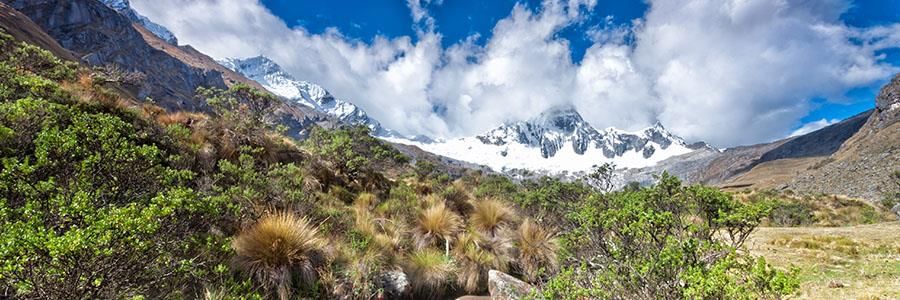
- High altitudes in India (> 3000 m) support a unique wildlife assemblage of global conservation importance.
- Endangered species include the snow leopard, bears, wolves, red pandas, and various mountain ungulates.
- High-altitude lakes and bogs serve as breeding grounds for diverse avifauna.
- India has ratified international agreements promoting the conservation of high-altitude wildlife species like the snow leopard.
- Each state will select a biologically important site and develop a science-based, participatory conservation program in the first five years.
- The project will subsequently expand to cover more biologically important sites.
Secure Himalaya

The Secure Himalaya project, launched by the Ministry of Environment, Forests & Climate Change (MOEF&CC) in collaboration with UNDP, aims to safeguard snow leopards, enhance Himalayan ecology, and uplift mountain communities' lives. The project spans across Himachal Pradesh, Jammu and Kashmir, Uttarakhand, and Sikkim.
Focus Areas:
Strengthening and Improving Protected Area Network: Enhancing the effectiveness of protected areas to ensure the safety and preservation of snow leopards and their habitats.
Landscape-level Conservation Approach for Wildlife: Implementing a holistic strategy that considers the entire landscape to promote the well-being of wildlife, particularly snow leopards, across their habitats.
Control of Poaching and Illegal Wildlife Trade: Implementing measures to curb poaching activities and illegal trade in wildlife, aiming to protect the endangered species, including snow leopards.
Mitigation of Human-Wildlife Conflicts: Developing strategies to minimize conflicts between humans and wildlife, ensuring coexistence and reducing harm to both communities and animals.
Management of Tourism in Wildlife Areas: Implementing responsible tourism practices in wildlife areas to prevent disturbances to snow leopards and their habitats while promoting sustainable tourism for the benefit of local communities.
Sea Turtle Project
A significant number of the world's Olive Ridley Turtle population migrates to Indian coastal waters, especially the eastern coast, every winter for nesting. To conserve these turtles and other endangered marine species, the Ministry of Environment & Forests initiated the Sea Turtle Conservation Project in collaboration with UNDP in November 1999. The project, implemented by the Wildlife Institute of India, focuses on 10 coastal states, with a special emphasis on the state of Orissa.
Project Objectives:
Inventory Mapping of Breeding Sites: Preparation of an inventory map identifying the breeding sites of Sea Turtles.
Identification of Nesting and Breeding Habitats: Recognition of nesting and breeding habitats along the shoreline.
Mapping Migratory Routes: Understanding the migratory routes taken by Sea Turtles.
Guidelines for Safeguarding and Minimizing Turtle Mortality: Development of guidelines to safeguard and minimize turtle mortality.
National and International Collaboration: Facilitating national and international cooperative efforts for Sea Turtle Conservation.
Guideline Plans for Tourism in Turtle Areas: Developing guideline plans for responsible tourism in areas frequented by Sea Turtles.
Infrastructure and Human Resources Development: Developing infrastructure and human resources for the conservation of Sea Turtles.
Key Achievements: One noteworthy achievement includes the demonstration of Satellite Telemetry to locate the migratory route of Olive Ridley Turtles in the sea. Additionally, efforts have been made to raise awareness among fishermen and state governments about the use of Turtle Exclusion Devices (TED) in fishing trawlers to reduce turtle mortality in fishing nets.
Indian Crocodile Conservation Project
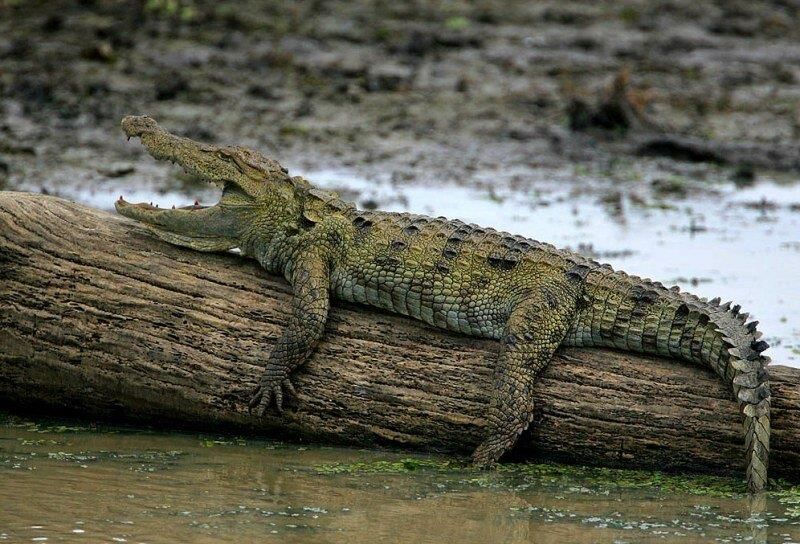
The Indian Crocodile Conservation Project has successfully saved crocodiles from disappearing. They were almost gone, but now they are doing much better. This project not only increased the number of crocodiles but also helped in different ways.
Goals:
Protecting Crocodiles: Making safe areas for crocodiles to live in their natural homes.
Growing More Crocodiles: Using methods like 'grow and release' to quickly make more crocodiles. More than seven thousand crocodiles have been added, including 4000 gharials, 1800 muggers, and 1500 saltwater crocodiles.
Helping Crocodiles Have Babies in Captivity: Encouraging crocodiles to have babies in a safe environment.
Learning Better Ways to Manage Crocodiles: Studying and finding better ways to take care of crocodiles.
Training People to Help Crocodiles: Teaching and training people to take care of crocodiles. This training happens at the project sites and a special institute in Hyderabad.
Getting Local People Involved: Making sure that people living nearby are part of the project, working together to help crocodiles.
Project Hangu
The Kashmir stag or Hangul is a special kind of deer found in northern India, specifically in the Kashmir valley. This deer faced serious threats, and a project called Project Hangul was started to protect and increase their population.

Current Status
- The Kashmir stag lives in groups in dense forests, high valleys, and mountains.
- Found in Dachigam National Park at elevations of 3,035 meters.
- Once, there were around 5,000 of them, but due to habitat destruction, over-grazing, and poaching, their numbers dropped to as low as 150 by 1970.
- With the efforts of Project Hangul, the population increased to over 340 by 1980.
Captive Breeding
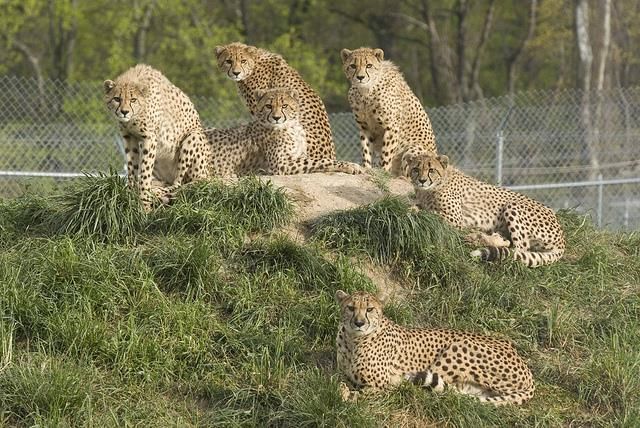
Captive breeding is a method where members of a wild species are captured and bred in a special facility under the care of wildlife experts. This approach is used in certain situations:
- Boosting Numbers: When the population of a species drops dangerously low, captive breeding can help increase their numbers.
- Releasing Into the Wild: Captive-produced young animals can sometimes be released into the wild to support populations in areas where they have diminished or disappeared.
- Addressing Environmental Problems: In situations where the existing habitat is of poor quality or faces environmental problems, captive populations can be maintained until solutions are found.
- Genetic Mixing: In fragmented habitats, captive breeding along with management can provide hope for survival by allowing genetic mixing.
- Behavioral Traps: Captive breeding helps in expanding the range of animals trapped in specific areas due to behavioral reasons.
- Scientific Research: Studying animals in captivity provides valuable knowledge that might be challenging to obtain in the wild, contributing to the conservation of the species.
- Examples: Captive breeding of lion-tailed macaque in Arignar Anna Zoological Park, Chennai, and Mysore Zoo.
These methods aim to preserve species facing threats and contribute to their survival in the wild.
Dolphins

Dolphins are fascinating aquatic animals found in various water environments, including seas, brackish water, and fresh water. India is home to 15 species of marine and harbor dolphins, and special efforts are made to protect them, especially the Gangetic Dolphin.
Conservation Efforts:
Legal Protection: All dolphins in India, whether in fresh water, brackish water, or marine environments, are given the highest protection under the Wildlife (Protection) Act, 1972.
Gangetic Dolphin:
- The Gangetic Dolphin, native to the Ganges River, is critically endangered and part of the Recovery program for Critically Endangered Species.
- The National Mission for Clean Ganga initiated a dolphin conservation program in 2016 for their long-term survival.
National Aquatic Animal:
- The Ganges River Dolphin is designated as the National Aquatic Animal, emphasizing its importance.
- Assam has recognized it as the state aquatic animal.
Unique Characteristics:
- The Gangetic Dolphin survives only in freshwater and is essentially blind.
- It uses ultrasonic sounds to navigate and hunt prey.
Population and Threats:
- There are approximately 3,700 Ganges River Dolphins in India.
- Major threats include river water pollution, siltation, accidental entanglement in fishing nets, and poaching.
The Conservation Action Plan for the Gangetic Dolphin (2010-2020) identifies threats and focuses on the impact of human activities on dolphin populations.
Project Dolphin - Future Initiatives
- The Ministry of Environment, Forests, and Climate Change (MoEF&CC) will launch a 10-year project called Project Dolphin.
- This project aims to conserve river and sea dolphins, strengthen biodiversity, create employment opportunities, and attract tourism.
Key Objectives:
- Use modern technology for enumeration and anti-poaching activities.
- Engage fishermen and river-dependent communities.
- Improve livelihoods of local communities through sustainable fishery and conservation methods.
This project is a significant step towards conserving and protecting dolphins, ensuring the well-being of aquatic habitats, and involving local communities in sustainable practices.
Government Measures to prevent Wildlife entry into Human Habitats
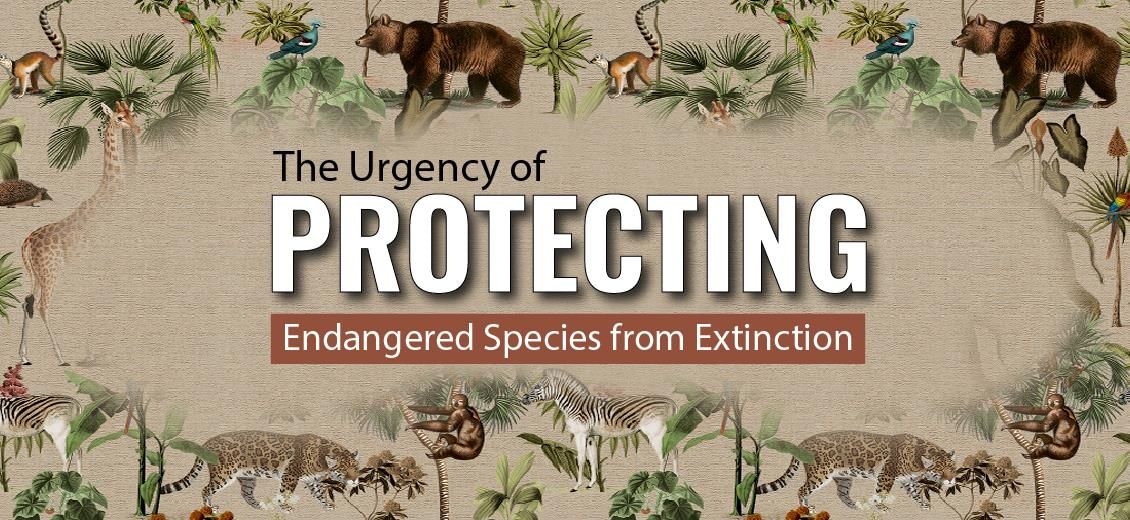
Financial Assistance:
- The government provides financial aid to state governments through schemes like ‘Integrated Development of Wildlife Habitats,’ ‘Project Tiger,’ and ‘Project Elephant.’
- This assistance is aimed at improving national parks and sanctuaries, ensuring sufficient food and water in forests, reducing animal migration to human habitats.
Community Cooperation:
- Emphasizes the collaboration with local communities in managing Protected Areas.
- Addresses people's concerns regarding human-wildlife conflicts.
- Encourages community involvement in wildlife habitat management.
India adopts Sawen

South Asia Wildlife Enforcement Network (SAWEN):
- India has adopted the Statute of SAWEN, becoming a formal member.
- Aims to strengthen ties with South Asian countries to control trans-boundary wildlife crime.
- Focuses on effective communication, coordination, collaboration, capacity building, and cooperation.
Preventive Measures:
- Construction of barriers such as boundary walls and solar-powered electric fences around sensitive areas to prevent wild animal attacks.
- These activities receive Central assistance support.
About SAWEN:
- A regional network comprising eight South Asian countries: Afghanistan, Bangladesh, Bhutan, India, Maldives, Nepal, Pakistan, and Sri Lanka.
- Aims to combat wildlife crime collectively, establishing common goals and approaches to tackle illegal wildlife trade in the region.
MoU Between ZSI & iBOL
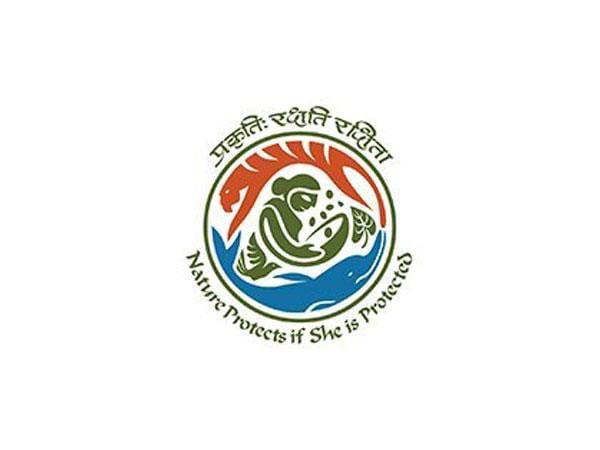
Objective:
- The MoU (Memorandum of Understanding) is an agreement between the Zoological Survey of India (ZSI) and the International Barcode of Life (iBOL).

- The focus is on a scientific technique called DNA barcoding, which is a method for quickly and accurately identifying different species by analyzing a specific portion of their genes and comparing it to a reference database.
Benefits of MoU: The MoU allows ZSI to participate in global initiatives such as Bioscan and the Planetary Biodiversity Mission.
Programs of iBOL
BARCODE 500K:
- Completed in 2015, BARCODE 500K laid the foundation by establishing facilities, protocols, and collaboration needed to build a comprehensive DNA barcode reference library.
- Goals:
- Provide DNA barcode coverage for half a million species.
- Develop the necessary informatics platforms and analytical protocols.
- Set up a core facility to support sequencing and informatics.
Bioscan

Launched in June 2019, BIOSCAN is an ongoing program set to conclude by 2026.
Goals:- Extend DNA barcode coverage to two million species.
- Implement biomonitoring in participating nations.
- Develop support for high-throughput sequencing through informatics.
- Encourage the application of DNA barcoding in various scientific fields.
Planetary Biodiversity Mission Goals
It is scheduled to launch in 2026 and complete by 2045.
- Conduct a comprehensive census of all multicellular species.
- Establish a worldwide biosurveillance program.
- Create a 'library of life' by preserving DNA extracts from every species, contributing to global biodiversity conservation efforts.
National Wildlife Action Plan
- The inaugural National Wildlife Action Plan (NWAP) was adopted in 1983 following the decision made during the XV meeting of the Indian Board for Wildlife in 1982. This plan delineated strategies and action points for wildlife conservation, which remain relevant.
- Over time, certain challenges have intensified, and new concerns have emerged, necessitating a shift in priorities. Increased commercial use of natural resources, ongoing growth in human and livestock populations, and changes in consumption patterns are leading to greater demographic impacts.
- The NWAP underwent revisions, with the third National Wildlife Action Plan for 2017-2031 being particularly noteworthy for acknowledging climate change's impact on wildlife. It emphasizes the inclusion of activities for mitigation and adaptation into wildlife management planning.

Components of the National Wildlife Action Plan for 2017-2031
- Enhancing and advancing integrated management of wildlife and their habitats.
- Addressing climate change and advocating for sustainable management of aquatic biodiversity in India.
- Promoting ecotourism, nature education, and participatory management.
- Reinforcing wildlife research and human resource development in wildlife conservation.
- Providing necessary policies and resources for wildlife conservation in India, facilitating integration into development planning processes.
Strategy for Action
- The strategy is based on the critical role of ecosystem-governed or tightly controlled natural processes in food production, health, and human survival.
- It underscores the intrinsic value of nature and its components, emphasizing the preservation of ecosystems, known as the 'Life Support System.'
- The plan highlights the preservation of genetic variation and sustainable use of species and ecosystems, both influencing scientific progress and supporting rural populations.
- A landscape approach to conservation is adopted for all species, prioritizing the recovery of vulnerable wildlife species and protecting their diverse habitats.
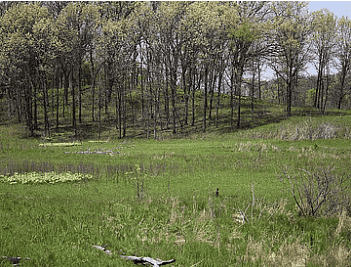 Grassland
Grassland - Despite being one of the world's 17 mega biodiversity countries, the plan notes a lack of serious consideration of adverse ecological consequences from population, commercialization, and development pressures on wilderness areas.
- The plan emphasizes the deteriorating state of natural heritage, including rivers, forests, grasslands, mountains, wetlands, coastal and marine ecosystems, dry areas, and deserts.
- Public support for wildlife conservation is deemed crucial, with recommendations to strengthen the 'core-buffer-multi-use surround' structure and increase investments in eco-development, education, innovation, training, conservation awareness, and outreach programs.
- The strategy prioritizes wildlife health and catastrophe management, reorients tourism management in wildlife regions, and calls for fair treatment of communities under the Forest Rights Act, acknowledging their reliance on natural biomass supplies.
DNA Barcoding
- A Memorandum of Understanding (MoU) has been signed between the Zoological Survey of India (ZSI), a subordinate organization under the Ministry of Environment, Forest and Climate Change (MoEF&CC), and the International Barcode of Life (iBOL), a Canadian not-for-profit corporation.
- ZSI and iBOL collaborate on DNA barcoding, a methodology that involves rapidly and accurately identifying species by sequencing a short segment of standardized gene regions and comparing individual sequences to a reference database.
 DNA Barcoding
DNA Barcoding - iBOL, a research alliance, comprises nations committed to human and financial resources for expanding the global reference database, developing informatics platforms, and creating analytical protocols for biodiversity assessment and description.
- The MoU enables ZSI to participate in global programs like Bioscan and the Planetary Biodiversity Mission.
Programs of iBOL
Barcode 500K (Completed in 2015)
- Established sequencing facilities, analytical protocols, informatics platforms, and international collaboration.
- Laid the foundation for building DNA barcode reference libraries.
Bioscan (Launched in June 2019)
- Aims to deliver DNA barcode coverage for 2 million species by 2026.
- Activates biomonitoring for ecoregions in participating nations, codifying species interactions.
- Develops informatics support for high-throughput sequencing.
- Promotes applications of DNA barcoding.
 Planetary Biodiversity
Planetary Biodiversity
- Planetary Biodiversity Mission (To be launched in 2026 and completed by 2045)
- Goals include completing the census of all multicellular species.
- Establishing a global biosurveillance program.
- Constructing a 'library of life' by preserving DNA extracts from all species.
Conservation Classification of Species
Flagship Species
- Chosen to represent environmental causes, typically ecosystems in need of conservation.
- Selected for their attractiveness or distinctiveness to generate public support.
- The concept aims to leverage support for the conservation of entire ecosystems.
Example Flagship Species: Indian tiger, African elephant, giant panda of China, mountain gorilla of Central Africa, orangutan of Southeast Asia, leatherback sea turtle.
Charismatic Megafauna
- Large animal species with widespread popular appeal.
- Environmental activists strategically use them to achieve conservation goals beyond the specific species.
- Examples include the Giant Panda, Bengal Tiger, and the Blue Whale.
 Charismatic Megafauna
Charismatic Megafauna
Umbrella Species
- Wide-ranging species whose requirements include those of many other species.
- Protecting umbrella species automatically extends protection to other species.
- Chosen for conservation decisions as safeguarding them indirectly protects the diverse species in their habitat.
|
744 videos|1444 docs|633 tests
|
FAQs on Shankar IAS Summary: Conservation Efforts - Famous Books for UPSC Exam (Summary & Tests)
| $1. What is the main objective of Project Tiger? |  |
| $2. How does the National Wildlife Action Plan contribute to wildlife conservation in India? |  |
| $3. What innovations were introduced in the 2010 National Tiger Assessment? |  |
| $4. What role does DNA Barcoding play in conservation efforts? |  |
| $5. What is the purpose of the Monitoring Illegal Killing of Elephants (MIKE) Programme? |  |






















